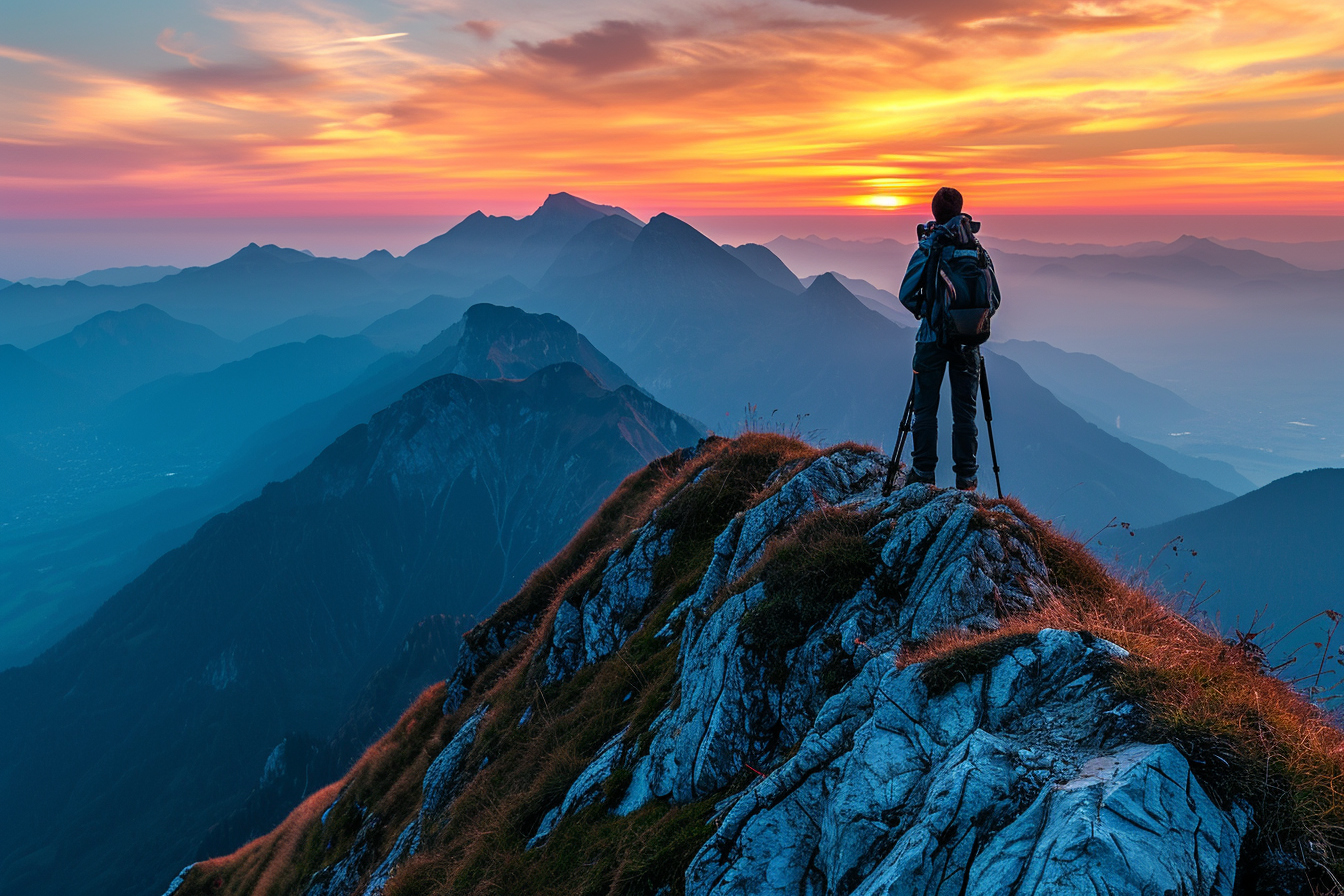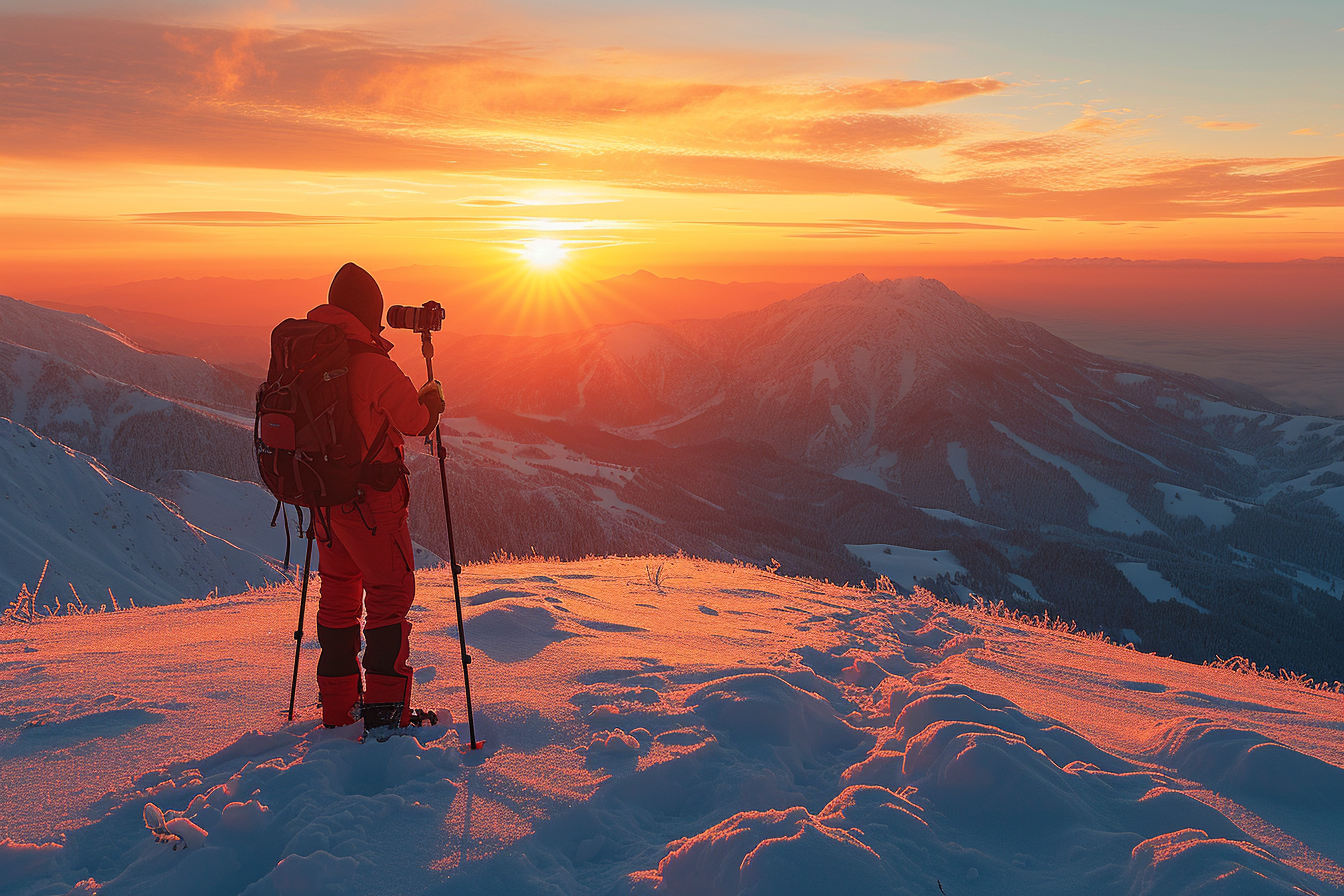
High mountain landscape photography is a thrilling and rewarding pursuit that presents photographers with unique challenges and opportunities. The allure of capturing majestic peaks, serene alpine lakes, and the ethereal light at high altitude is undeniable. However, to excel in this specialized genre of photography, one must combine technical skills with creative vision and an adventurous spirit. This article delves into essential techniques and tips to help photographers master the art of high mountain landscape photography.
Understanding the terrain: a photographer’s playground
High mountain landscapes offer unparalleled subjects for photographers. But before venturing into the wilderness with your camera equipment, it is paramount to understand and respect the terrain. Mountains are dynamic environments where weather can change rapidly, and safety should always be a priority.
Photographers should not only be proficient in navigation using a map and compass or GPS but also well-versed in reading the terrain. Look for leading lines formed by ridges or streams, and use them to guide the viewer’s eye through the photo. Distinctive rock formations can serve as a compelling focal point in a composition, while clusters of alpine flowers can add a splash of color to a verdant scene.
Preparing for the journey: packing essentials for high mountain photography
When preparing for high mountain photography, selecting and packing the right equipment is critical. Weight is a major consideration, as you may need to hike to remote locations. Essential items include:
- Camera: A reliable and durable camera that performs well in low-light conditions is ideal for mountain photography.
- Lenses: A combination of lenses—wide-angle for sweeping vistas, a standard zoom for versatility, and a telephoto lens for isolating distant peaks—is beneficial.
- Tripod: A sturdy yet lightweight tripod is essential for stability, especially for long exposures or panoramic shots.
- Filters: Circular polarizers can reduce glare and enhance the blue of the sky, while neutral density filters enable the capture of smooth water movement.
- Extra batteries and memory cards: Cold temperatures can drain batteries quickly, and high-resolution images fill memory cards fast.
Apart from camera gear, clothing and personal items should include layers for variable weather, protective footwear, water, food, and a first aid kit. Always inform someone of your itinerary and expected return time.
The golden hours: harnessing natural light in the mountains
In mountain landscape photography, lighting can make or break an image. The golden hours—shortly after sunrise and before sunset—are coveted for the warm, diffused light that can transform a landscape. During these times, the low angle of the sun can accentuate textures and shapes in the mountain terrain.
Chasing the perfect light often means starting hikes in the dark to reach your chosen location before sunrise or planning a safe descent after sunset. This commitment to capturing light at its most flattering can separate the extraordinary photos from the merely good ones.
Composition strategies: framing mountain majesty
The Rule of Thirds:
A fundamental compositional technique, the rule of thirds, involves dividing the frame into a grid with two horizontal and two vertical lines, then placing the main subjects along these lines or at their intersections. This method can create a balanced and engaging high mountain landscape image.
Foreground Interest:
Adding elements such as boulders, plants, or ice formations in the foreground can provide a sense of scale and depth to your mountain photographs. The viewer’s eye naturally starts at the foreground before traveling deeper into the scene.
Scale and Perspective:
Including a recognizable object—a person, tent, or tree—in the composition can convey the sheer size of the surrounding mountains. This comparison can evoke a stronger emotional response from the viewer.
The technical aspects: camera settings and focus for maximizing image quality
Aperture:
A small aperture (high f-number) increases the depth of field, ensuring both foreground and distant elements are sharply in focus. Settings like f/11 to f/16 are commonly used; however, be aware of diffraction limiting sharpness at very small apertures.
Shutter Speed:
For landscape photos where nothing is moving, a slower shutter speed will not affect sharpness and allows the use of smaller apertures and lower ISOs. When capturing moving water or clouds, shutter speed becomes an artistic choice to freeze or blur motion.
ISO:
Keep the ISO as low as possible, ideally at the native ISO of your camera, to minimize noise in the image. In low light situations, increasing the ISO might be necessary, but always strive for the optimal balance between noise and exposure.
Focusing:
Manually focusing or using back-button focus can provide better control in landscape photography. For maximum sharpness, focus one-third into the scene or use hyperfocal distance techniques to maximize the depth of field.
Capturing the dynamic range: exposure techniques for high contrast scenes
Mountain landscapes often have a high dynamic range, with deep shadows in valleys and bright highlights on snow-covered peaks. The human eye can perceive this range of luminance, but cameras are more limited. Techniques to handle this include:
Bracketing:
Taking multiple exposures of the same scene at different exposure values can allow you to blend the images in post-processing, capturing detail in both shadows and highlights.
Graduated Neutral Density Filters:
These filters are darker at the top, gradually becoming clearer towards the bottom. They can help balance the exposure between a bright sky and a darker foreground.
HDR Photography:
High Dynamic Range (HDR) photography involves taking several photographs at different exposure levels and combining them into a single image that reflects a wider range of lights and darks than a single exposure can capture.
Embracing weather and seasons: the dramatic impact on mountain photography
Weather can play a dramatic role in the landscape and thus in photography. A clearing storm can cast dramatic light on mountains, fresh snow can redefine contours and textures, and mist can add a layer of mystery to valleys. Embrace changing weather, as these elements can elevate a photograph from ordinary to extraordinary.
Seasonal changes also offer varied opportunities for the high mountain landscape photographer. The vibrant greens of summer, the rich hues of autumn, or the pristine white of winter each provide a different context in which to frame the mountains. Adaptability is key, as the same location can offer vastly different photographic opportunities throughout the year.
Post-Processing: polishing your high mountain images
After returning from the mountain with memory cards full of images, post-processing is where you can refine and enhance your photographs. Tools such as Adobe Lightroom or Photoshop are invaluable for adjusting exposure, contrast, clarity, and color balance. Panoramic stitching or focus stacking are techniques that can also be applied in post-processing for striking results.
Always strive to maintain a natural look when editing landscape photos. Over-processing can diminish the authentic beauty of the high mountain scenes you worked so hard to capture.
High mountain landscape photography is an art form that requires dedication, technical prowess, and creative insight. By employing these techniques and tips, photographers can improve their craft and more effectively capture the grandeur of the mountains. Remember, the journey to mastering high mountain landscape photography is a perpetual ascent; with each climb, there are new vistas to explore and immortalize through the lens. Keep chasing the light and striving for that next breathtaking image. The mountains await.

